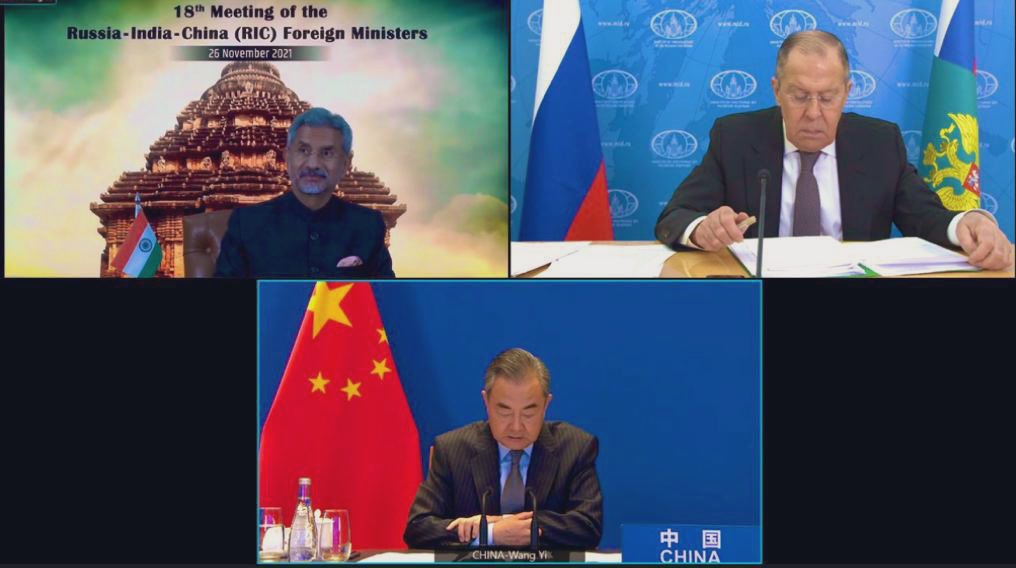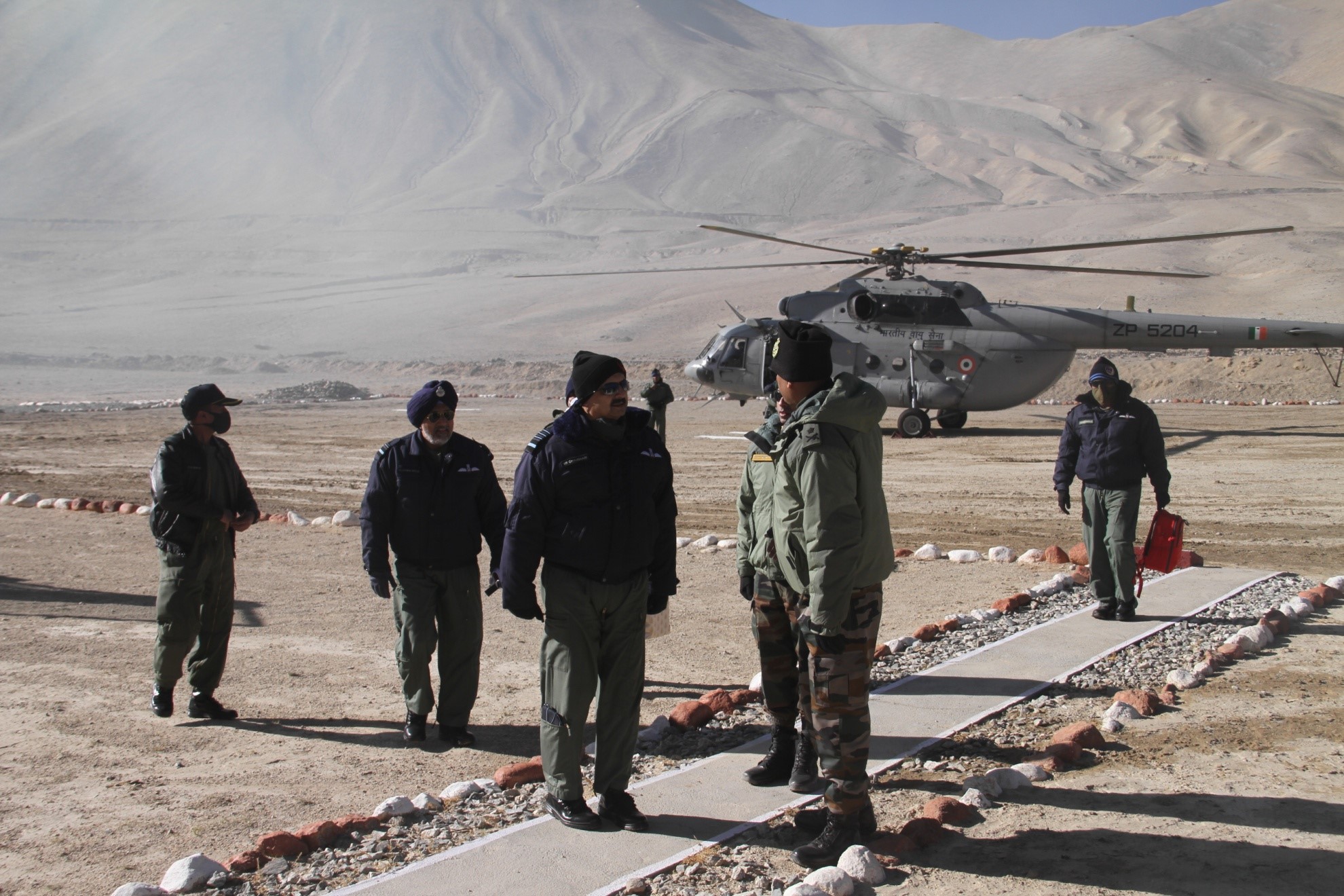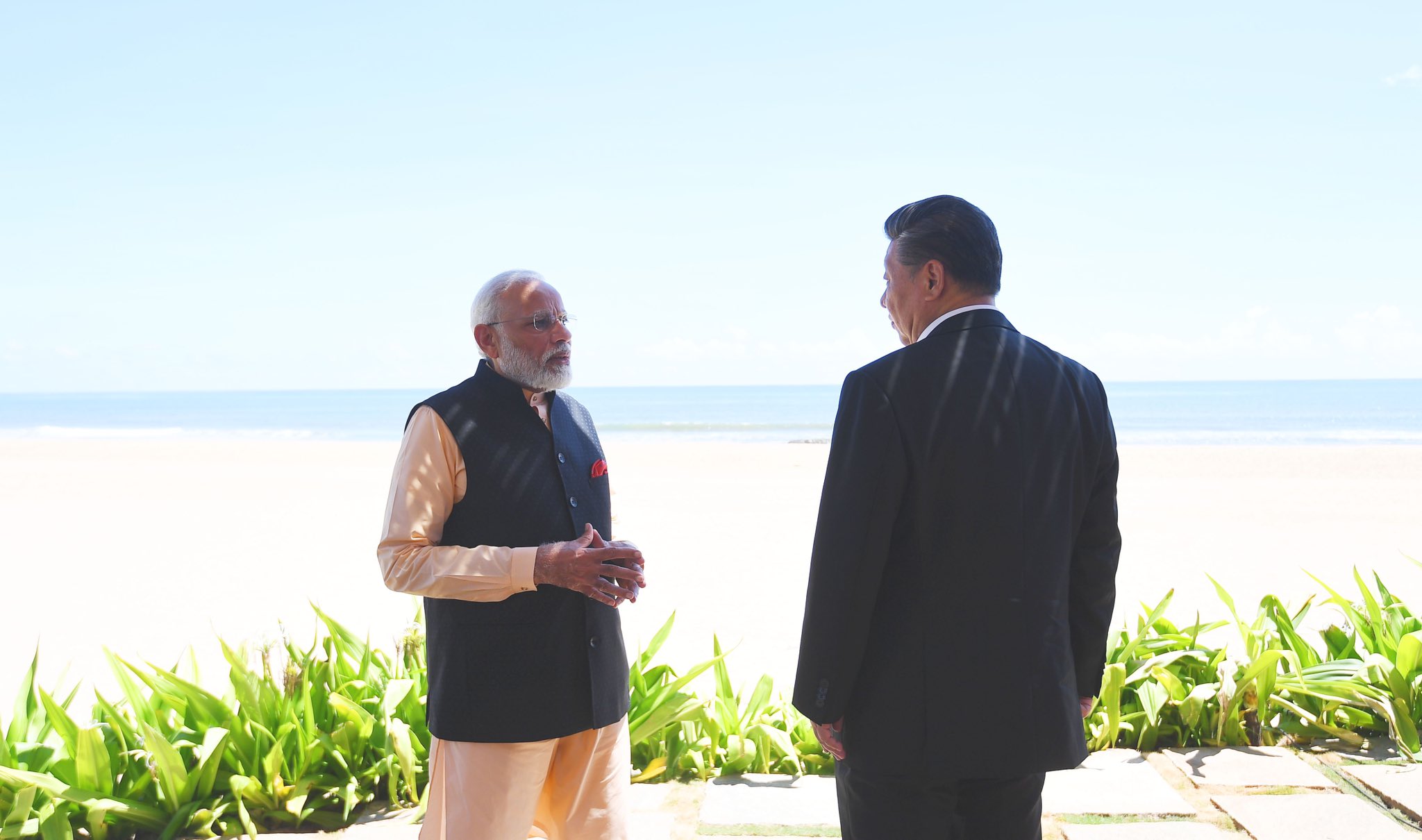China has changed its tone and tenor and warmed up to India despite a protracted border conflict that enters its second winter.
A recent meeting between the Foreign Ministers of the Russia-India-China (RIC) trilateral grouping has come with a surprise. The 18th Meeting of the Foreign Ministers of China, Russia, and India took place by video link on November 26.
India joined Russia to extend support to the 2022 Beijing Winter Olympics.
The joint communiqué in which “the Ministers voiced their support to China to host the Beijing 2022 Winter Olympic and Paralympics’ Games” has received a lot of traction, reported China’s state-owned Global Times.

The US and some of its allies, including the United Kingdom and Australia, are considering a “diplomatic boycott” of the Winter Olympic Games in Beijing. In terms of geopolitics, New Delhi has been growing closer to Washington in recent years. In this context, India’s support for the Beijing 2022 Winter Olympic Games is seen as a little surprising.
More so, because it comes in the backdrop of ongoing tensions between the two with China still sitting on the territory claimed by India and building new villages along the border in the eastern sector of the disputed border called the Line of Actual Control (LAC).
“This clearly illustrates that, while border conflicts between China and India persist, they do not constitute the entirety of the bilateral relationship. Both sides share a number of mutual interests in a variety of areas. Conflicts between the two countries can be avoided in the future, as they were before 2020,” state-controlled Global Times said in an editorial.
This sudden Chinese warming-up to India even as it continues to trade barbs on other fronts and consistently upgrades military infrastructure along the border is hinting at a complex nature of their bilateral relations.
India-China ‘Bitter-Sweet’ Ties
China has taken the opportunity to be all praise for its adversary through its state media, by implying that the relationship between India and the United States is not unconditional and India’s foreign policy hinges more on common interests.
It clearly iterated that “India’s behavior in the run-up to the 2022 Winter Olympic Games in Beijing exemplifies the country’s strong diplomatic and strategic autonomy.
Despite its close connections with the United States, India does not support the US in all regional and international matters. New Delhi is not a ‘natural ally’ of the United States”, the GT editorial says.

However, amid all this sweet talk, there have been news reports about the Chinese PLA building new highways and roads in addition to existing ones and deploying missile and rocket regiments near eastern Ladakh, the flashpoint of the current border conflict. China has also dispatched cold-resistant gear to its personnel by the Y-20 large transport aircraft.
Apart from the key bases at Kashgar, Gar Gunsa, and Hotan, China’s military infrastructure is being upgraded, according to insiders. They are expanding roadways and building new airstrips. It is believed PLA’s missile and rocket regiments have been deployed in increasing numbers in the Tibet region, and camouflaged bunkers have been created there. Drone surveillance is being carried out as well.
China’s state media stated earlier this month that the PLA had conducted live-fire drills along the LAC. The Indian side has publicly expressed concerns regarding the Chinese build-up and recruitment of Tibetans in the PLA under the pretext of the “son of soil” narrative of the PLA Army.
It has also significantly upped the ante by enhancing its operational preparedness, deploying sophisticated missiles including the BrahMos and expediting weapon procurement like the HAMMER bunker busters to deal with the rising military threat at its borders with China and Pakistan.

India has been making significant efforts to bring the stalemate to an end while assertively maintaining that it does not recognize the Chinese occupation of its territories.
“India gives a positive signal to the rest of the world that it will strive to handle the frictions with China, and bilateral relations tend to recover after a time of deterioration,” said Qian Feng, director of the research department at Tsinghua University’s National Strategy Institute.
“However, more effort and patience are required to return to the situation prior to the current impasse. More conversation and consultations are needed between the two parties to settle their issues,” the analyst was quoted as saying.
India threw its weight behind the Chinese Winter Olympics despite Washington, India’s strategic partner and the driver of its Indo-Pacific policy hinting at a diplomatic boycott.
The US followed by the UK and Australia, have all expressed their willingness to boycott the Olympics due to deteriorating human rights and civil liberty situation in the mainland, including the doubts cast over Chinese tennis star Peng Shuai after she accused a Chinese Communist Party member of sexual assault.
Potential Areas of Convergence
Apart from the 2022 Winter Olympic Games in Beijing, the three foreign ministers also reached an agreement in other areas, according to the joint communiqué. They reaffirmed “the necessity for sustained cooperation in this fight, inter alia through sharing of vaccination doses, transfer of technology, development of local production capacity and promotion of supply chains for medical products” in response to the COVID-19 pandemic.
The three foreign ministers also demanded that “urgent and unrestricted humanitarian assistance be delivered to Afghanistan”. They agreed that the China-Russia-India collaboration will “contribute not just to their own prosperity, but also to global peace, security, stability, and development”.
This announcement comes at an opportune time as reports have emerged about stock markets tilting towards China once again. Global investors with billions of dollars in their portfolios are gradually beginning to favor China over India, reversing a year-long pattern that has seen stocks move in opposing directions.

In addition to this, the India-China bilateral trade crossed $100 billion despite the protracted border tensions, according to the data released by China’s General Administration of Customs (GAC).
Earlier this year, China along with its all-weather ally Pakistan decided to give the Delhi Summit hosted by India on the Afghanistan issue a miss.
Foreign Minister S Jaishankar, who convened the 18th meeting of RIC Foreign Ministers, also said that Russia, India, and China must recognize each other’s vaccination certificates and that the globe should avoid unjustified and unscientific travel restrictions. If implemented, this could see travel restrictions easing a sizeable chunk of Indian students returning to their campuses in China.
Even as India forges stronger relations with the United States and its allies, there are several channels of diplomacy in place with Russia and China, including the Russia-India-China (RIC), Shanghai Cooperation Organisation (SCO), and Brazil, Russia, India, China, and South Africa (BRICS). India is gearing to host the 2+2 dialogue with Russia next month that is expected to see the signing of multiple defense contracts.
- Contact the author at sakshi.tiwari9555@gmail.com
- Follow EurAsian Times on Google News




